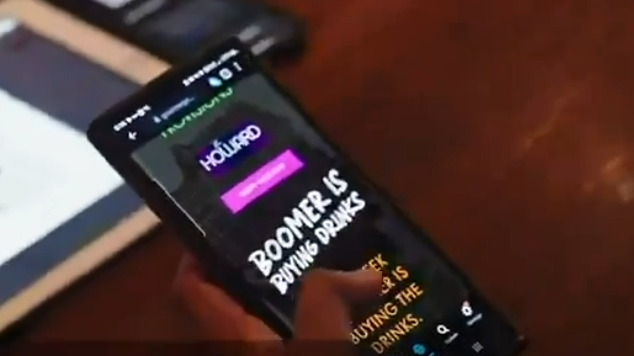In 2015, MTV conducted a survey targeting 1,000 individuals from the post-millennial generation, those born after the year 2000 — the survey aimed to determine their preferred generational name. Surprisingly, the winning choice was “The Founders Generation,” which speaks volumes about their mindset.
In this evolving landscape, where the narrative of the disruptive founder holds sway, it becomes increasingly important for each individual to comprehend the cryptocurrency ecosystem.
As we aspire to become founders in our own right and navigate financial interactions with others, understanding the nuances of this digital frontier empowers us to participate confidently and responsibly in the emerging crypto-financial paradigm.
Understanding Blockchain Basics
In the era of digital revolution, blockchain technology has emerged as a game-changer, disrupting traditional systems and revolutionizing various industries. But what exactly is blockchain, and how does it work? Let’s unravel this fascinating innovation and explore its significance as we step into a new age of finance.
Blockchain technology is a decentralized and transparent public ledger, enabling individuals to record and view transaction history.
In contrast to centralized systems like traditional bank ledgers, blockchain operates openly, allowing anyone to access transaction data. Transactions undergo verification through a distributed process rather than reliance on a central authority.
The most notable application of blockchain technology to date is its association with Bitcoin, the virtual currency. However, the potential of blockchain extends far beyond its initial application, presenting opportunities for direct peer-to-peer value exchange without the need for intermediaries.
While blockchain offers vast possibilities, it’s essential to acknowledge that, like any emerging technology, it is susceptible to manipulation and exploitation. Despite this, blockchain promises to foster a decentralized economy where users can engage in transactions without the presence of extractive intermediaries.
Key Components of Blockchain:
- Blocks: Each block in the blockchain contains a batch of transactions, timestamped and linked to the previous block, forming a chronological chain.
- Decentralization: The network of nodes verifies and validates transactions through a consensus mechanism, eliminating the need for a central authority.
- Cryptography: Transactions are secured using cryptographic techniques, ensuring data integrity and preventing tampering.
The Process of Blockchain Transactions
Now, let’s walk through the process of how blockchain transactions are executed:
- Transaction Initiation: A user initiates a transaction by creating a digital record containing relevant information, such as the sender, recipient, and amount.
- Validation: The transaction is broadcast to the network of nodes, where it undergoes validation. Nodes verify the transaction’s authenticity and integrity through consensus algorithms like Proof of Work (PoW) or Proof of Stake (PoS).
- Block Formation: Once validated, the transaction is bundled with other transactions to form a block. Each block is cryptographically linked to the previous block, creating an immutable chain of blocks.
- Adding to the Blockchain: The newly formed block is added to the blockchain, becoming a permanent part of the ledger. This process ensures transparency and immutability, as tampering with one block would require altering all subsequent blocks, making it computationally infeasible.
- Confirmation: After the block is added, the transaction receives confirmations from multiple nodes, further enhancing its security and reliability.
Why Understanding Blockchain Matters in the New Age of Finance
As we venture into a new era of finance characterized by digital transformation and innovation, understanding blockchain technology is paramount for several reasons:
- Transparency and Trust: Blockchain fosters transparency and trust by providing a tamper-proof record of transactions, reducing the risk of fraud and manipulation.
- Efficiency and Cost Savings: By eliminating intermediaries and streamlining processes, blockchain reduces transaction costs and accelerates settlement times, enhancing efficiency and reducing operational overhead.
- Financial Inclusion: Blockchain has the potential to democratize finance by providing access to financial services for underserved populations, enabling greater financial inclusion and empowerment.
- Innovation and Disruption: Blockchain catalyzes innovation, enabling the development of decentralized applications (DApps), smart contracts, and new business models that challenge traditional paradigms.
- Security and Resilience: With its decentralized architecture and cryptographic safeguards, blockchain offers robust protection and resilience against cyber threats and data breaches, ensuring the integrity and confidentiality of transactions.
In conclusion, blockchain technology represents a paradigm shift in how we transact, innovate, and interact in the digital age. By grasping its fundamentals and implications, individuals and businesses can harness its transformative potential to navigate the complexities of the modern financial landscape and drive meaningful change in the global economy. As we embrace this revolutionary technology, we embark on a journey towards a more transparent, inclusive, and efficient financial ecosystem.
Engaging with the Boomer Community
To take the next step in your crypto journey, immerse yourself in the vibrant Boomer community through various channels:
- Telegram: Join the Boomer Telegram group to connect with like-minded individuals, share insights, and stay updated on the latest developments in the crypto sphere.
- YouTube: Dive into Boomer’s YouTube channel for educational content, tutorials, and interviews with industry experts, empowering you with knowledge and inspiration to navigate the crypto landscape.
- Social Media: Follow Boomer on platforms like Twitter, Instagram, and Facebook to engage with the community, participate in discussions, and discover exciting opportunities in the world of crypto.
By actively engaging with the Boomer community, you can unlock a wealth of resources, support, and camaraderie on your journey towards crypto enlightenment.
Follow @BoomerOnBase on X for more insights.
Or visit us at https://baseboomer.com/ to learn more!
Source: https://medium.com/boomeronbase/how-does-blockchain-technology-work-9d7f929aa488
















